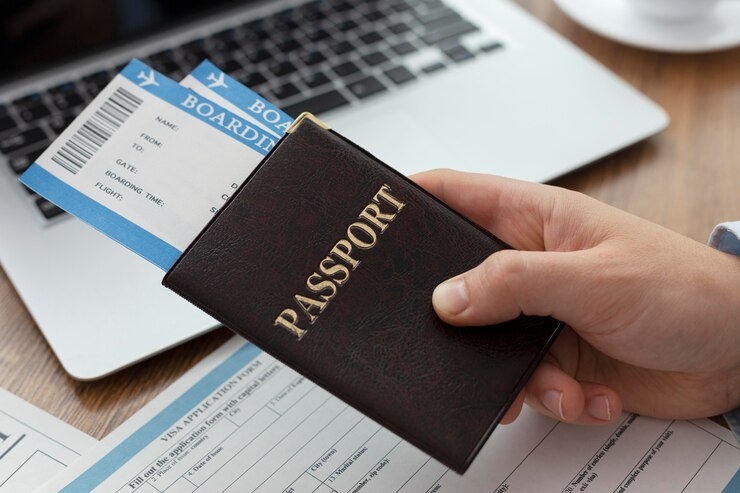Namibia, a country located in southwestern Africa, has long been known for its vast landscapes, diverse cultures, and unique ecosystems. However, in recent years, the country has also become a subject of interest for demographers, economists, and policymakers due to its steady population growth. With a growth rate of 1.82% recorded in the latest census, Namibia’s population continues to expand. But what’s driving this growth? Is it the result of a high birth rate, or is migration the primary factor? Understanding the forces behind Namibia’s population dynamics is crucial for addressing the challenges and opportunities the country faces in the years ahead.
This article will explore the key drivers behind Namibia’s 1.82% growth rate, focusing on birth rates and migration patterns. By examining these two factors, we can gain a clearer understanding of how Namibia’s demographic future is unfolding and the implications it holds for the nation’s development.
Understanding Namibia’s Demographic Context
Before diving into the specifics of migration and birth rates, it’s essential to grasp the broader demographic landscape of Namibia. The country’s population stands at just over 2.5 million people, and it covers an area of approximately 825,000 square kilometers. Despite being one of the most sparsely populated countries in the world, Namibia has seen consistent population growth over the years. However, its relatively low population density has created both opportunities and challenges for policymakers, particularly when it comes to the distribution of resources, services, and infrastructure.
Namibia’s population growth rate of 1.82% reflects an ongoing increase, although this growth rate is slower than that of many other African countries. By breaking this growth down into birth rates and migration, we can identify the specific factors at play.
The Birth Rate: A Key Contributor to Growth
The birth rate in Namibia has long been a significant contributor to the country’s population growth. While Namibia’s fertility rate has been declining over the past few decades, it is still higher than that of many developed nations. According to the World Bank, the fertility rate in Namibia stood at approximately 3.3 children per woman in 2020. This rate is a significant factor in the overall growth of the population, contributing to the country’s steady increase in numbers.
Factors Driving Namibia’s Birth Rate
- Cultural Influences: In many parts of Namibia, especially among rural communities, having large families is still seen as a cultural norm. Traditional beliefs and values often prioritize the importance of children, leading to larger household sizes. Family plays a central role in many Namibian societies, and children are seen as vital for social cohesion, inheritance, and labor in agricultural activities.
- Economic Factors: Despite improvements in healthcare and living standards, Namibia still has a relatively high child mortality rate, particularly in rural areas. As a result, some families may opt for having more children as a way of ensuring that some survive to adulthood. This is especially true in regions where healthcare access is limited, and the risks of infant mortality remain high.
- Education and Healthcare Access: While Namibia has made great strides in improving education and healthcare, especially for women and children, there remains a significant gap in services between urban and rural areas. In urban centers like Windhoek and Swakopmund, women are increasingly pursuing education and careers, leading to later marriage and fewer children. In contrast, rural areas still experience higher fertility rates due to limited access to education, contraceptives, and family planning services.
- Government Policies: Namibia’s government has implemented various programs aimed at improving maternal and child health, which has contributed to the country’s increasing life expectancy. However, the fertility rate remains relatively high, and government policies focused on education, gender equality, and family planning could play a significant role in future shifts in birth rates.
Implications of the Birth Rate on Namibia’s Growth
The birth rate remains a primary contributor to Namibia’s population growth, particularly in rural areas. However, the country’s population growth is not solely driven by higher fertility rates. In recent years, the migration rate has become an equally significant factor in driving the country’s overall population increase.
Migration: Inflows and Outflows Shaping Population Growth
While birth rates remain an important driver of growth in Namibia, migration—both internal and international—is playing an increasingly significant role in shaping the country’s population dynamics. Migration patterns are influenced by economic opportunities, environmental factors, and political stability, and these flows of people have a profound impact on Namibia’s demographic future.
Internal Migration: Urbanization and Rural Exodus
Internal migration, which refers to the movement of people within Namibia, is one of the most significant migration trends affecting the country. A growing number of Namibians are leaving rural areas in search of better opportunities in urban centers. This phenomenon, known as urbanization, is particularly evident in Windhoek, the capital city, as well as in other towns like Swakopmund, Walvis Bay, and Rundu.
- Rural-to-Urban Migration: Many Namibians from rural areas migrate to cities for improved access to education, healthcare, and employment. The increasing availability of jobs, better living conditions, and modern infrastructure in urban areas has led to an ongoing migration pattern, with many individuals and families seeking to improve their standard of living. This contributes to the growing urban population, which now constitutes more than 54% of Namibia’s total population.
- Impact on Rural Areas: The shift towards urban living has left many rural areas with declining populations. While this migration creates opportunities for urban development, it also presents challenges for rural regions in terms of service delivery and economic sustainability.
International Migration: Inflows and Outflows
Namibia’s international migration patterns are influenced by factors such as economic opportunity, political stability, and environmental conditions. Historically, Namibia has experienced both immigration and emigration, which have influenced the country’s population growth.
- Immigration: Namibia has attracted migrants from neighboring countries, such as Angola, South Africa, and Zambia, due to its relative political stability and growing economic opportunities. Many immigrants come to Namibia in search of employment, education, and a better quality of life. The influx of migrants contributes to the overall growth rate, particularly in urban centers.
- Emigration: Namibia has also experienced emigration, particularly among its educated youth and professionals. Economic opportunities abroad, particularly in countries like South Africa, Australia, and the United Kingdom, have drawn many Namibians seeking better employment and career prospects. While emigration has led to a “brain drain,” it has also allowed for the remittance flow into the country, benefiting the economy.
- Impact on Population Growth: International migration has both positive and negative effects on Namibia’s growth. The inflow of migrants supports economic growth and urbanization, while emigration, particularly of skilled labor, poses challenges for local industries and services.
Namibia’s 1.82% population growth rate is driven by a combination of birth rates and migration patterns. While the birth rate remains a significant factor in the country’s overall population increase, internal migration, driven by urbanization trends, is becoming increasingly important. The movement of people from rural areas to urban centers reflects the opportunities and challenges presented by economic growth and urban development.
As Namibia continues to urbanize and develop its economy, migration—both internal and international—will play an increasingly important role in shaping the demographic landscape. At the same time, the birth rate will continue to exert influence on population growth, particularly in rural regions, where cultural and economic factors contribute to higher fertility rates.
Understanding the interplay between these two forces—birth rates and migration—is essential for policymakers, businesses, and civil society as they plan for Namibia’s future. By addressing the needs of both urban and rural populations and promoting policies that support sustainable growth, Namibia can continue to develop as a dynamic and prosperous nation in southern Africa.
Join 'Namibia Today' WhatsApp Channel
Get the breaking news in Namibia — direct to your WhatsApp.
CLICK HERE TO JOIN












